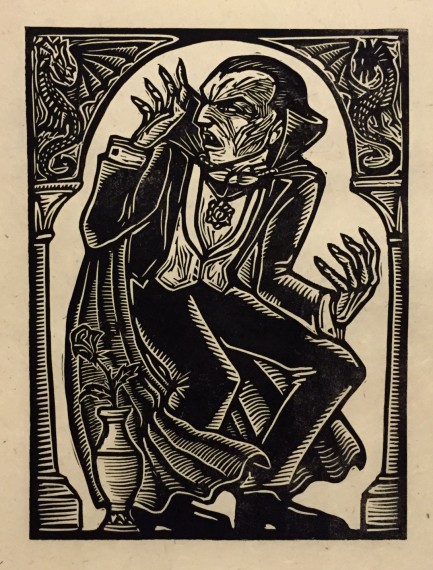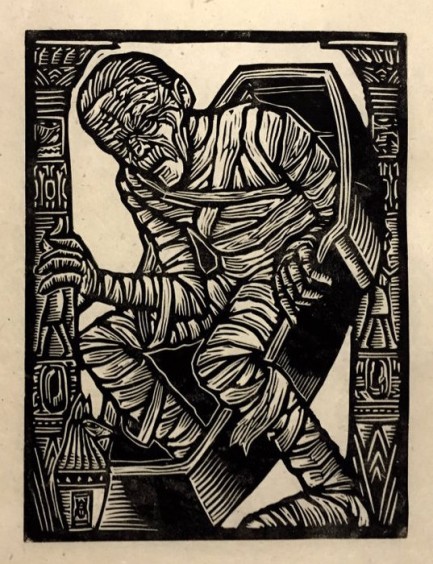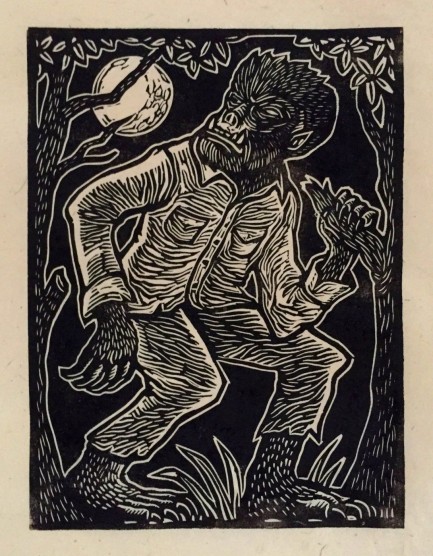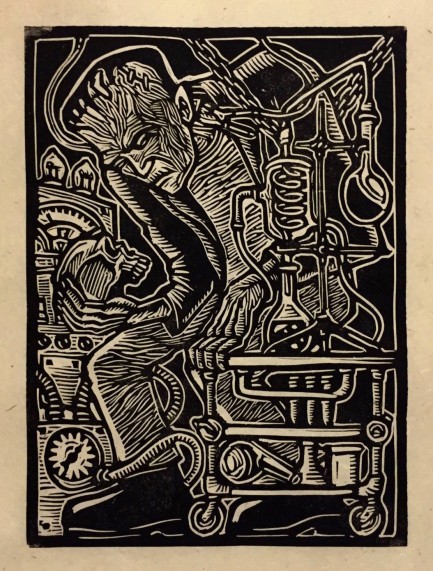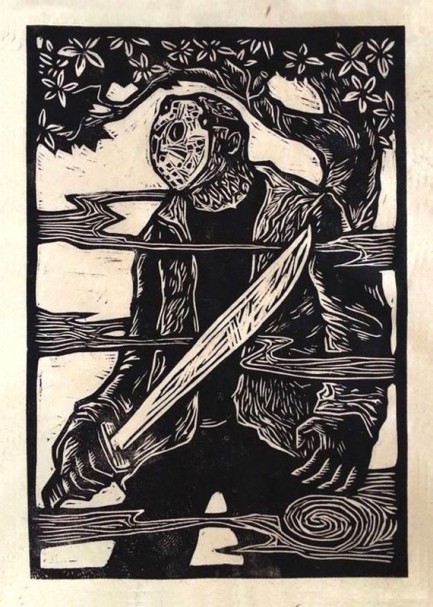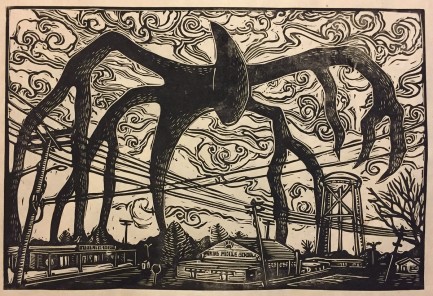 Strange ideas from the minds and lenses of mid-century promo photographers. 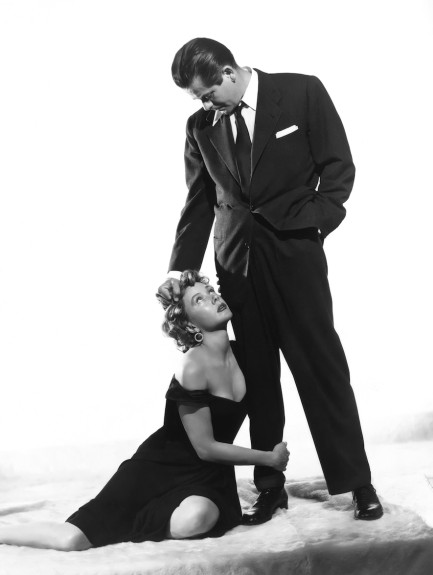 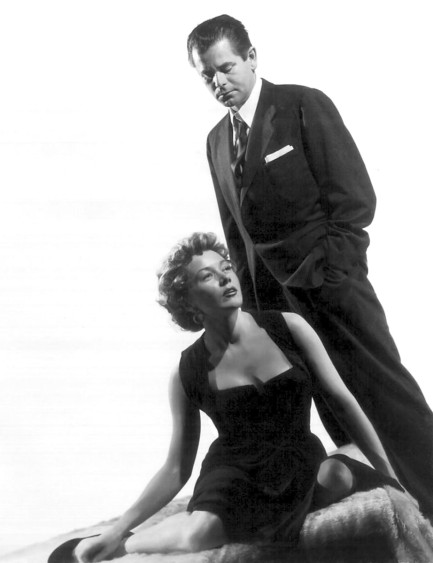 A while back we shared a promo photo of Glenn Ford and Gloria Grahame from 1953's The Big Heat that was meant to imply oral sex (it absolutely was, and you can see for yourself here). We commented on its weirdness, and noted that an actress would probably not be asked or made to pose that way today. The shot got us thinking about whether there were other kneeling promo shots from the mid-century era, and above you see two others from The Big Heat. Below we have more such shots, and while none are as jarring as that previous promo, they're all interesting. We assumed there would be few if any featuring kneeling males, but we found a couple. Even so, there are probably scores more kneeling actresses that we missed. While many of shots took the form they did to highlight the criminal/victim themes in their parent films, you still have to wonder what else—consciously or not—was in the various photograhers' minds. Anyway, just some food for thought this lovely Thursday. Ready, set discuss! 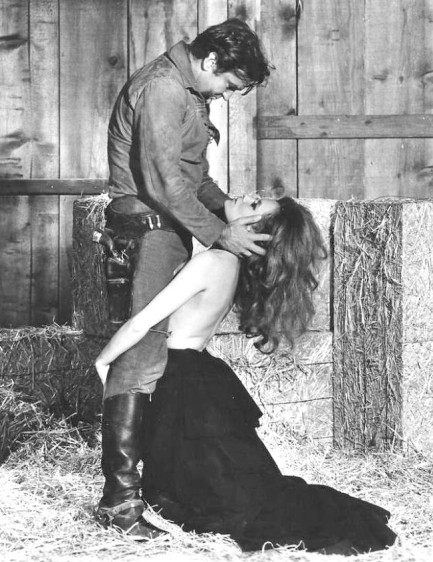 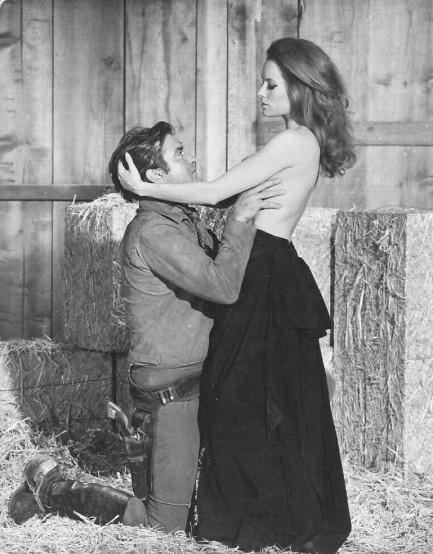 Rod Taylor and Luciana Pauluzzi swap subordinate positions for 1967's Chuka. Rod Taylor and Luciana Pauluzzi swap subordinate positions for 1967's Chuka.
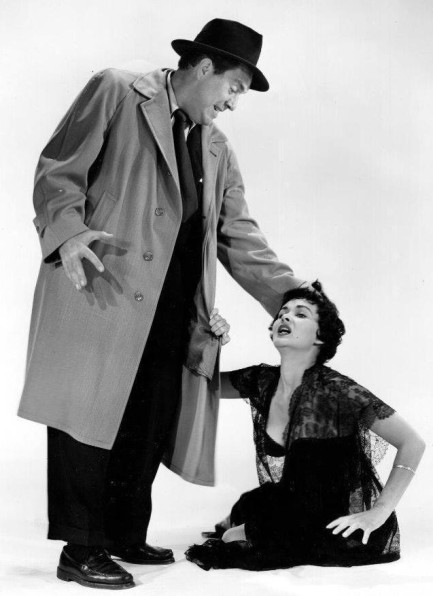 Edmund O'Brien goes for the time honored hair grab on Marla English for 1954's Shield for Murder. Edmund O'Brien goes for the time honored hair grab on Marla English for 1954's Shield for Murder.
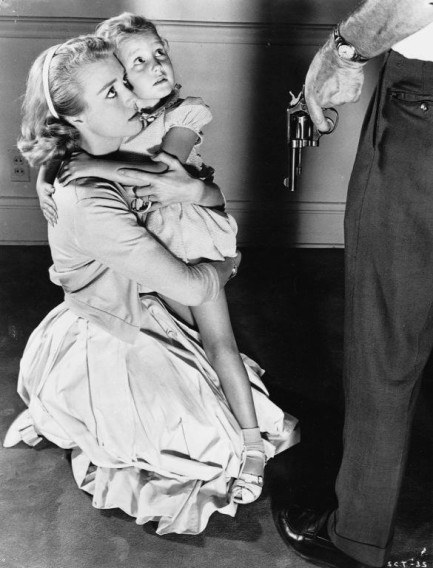 Inger Stevens and Terry Ann Ross for Cry Terror, an adaptation of a novel we talked about a few years ago. Inger Stevens and Terry Ann Ross for Cry Terror, an adaptation of a novel we talked about a few years ago.
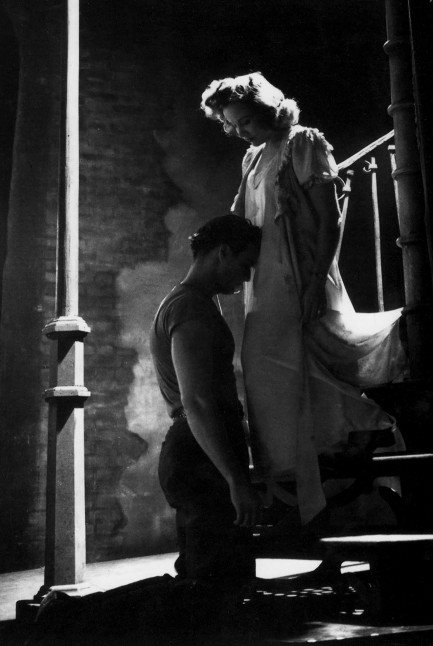 Kim Hunter soothes an overheated Marlon Brando in a promo for 1951's A Streetcar Named Desire. Kim Hunter soothes an overheated Marlon Brando in a promo for 1951's A Streetcar Named Desire.
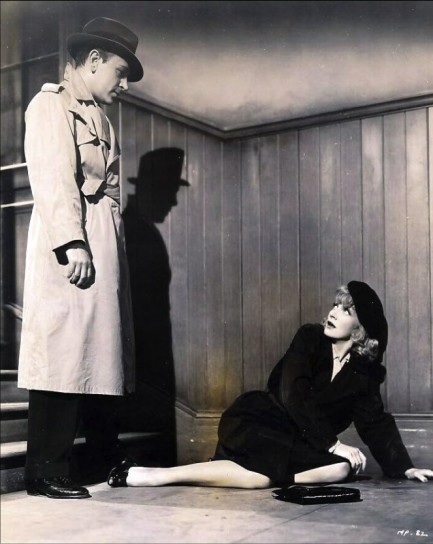 George Raft menaces Marlene Dietrich in the 1941 comedy Manpower. George Raft menaces Marlene Dietrich in the 1941 comedy Manpower.
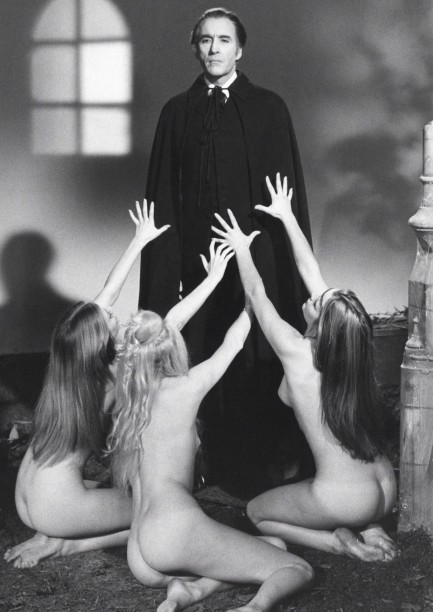 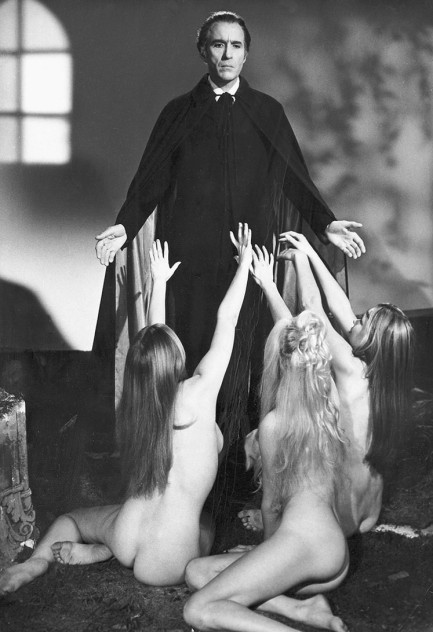 As promos go, these actually make sense. They show three unidentified models mesmerized by vampire Christopher Lee for 1970's Taste the Blood of Dracula. As promos go, these actually make sense. They show three unidentified models mesmerized by vampire Christopher Lee for 1970's Taste the Blood of Dracula.
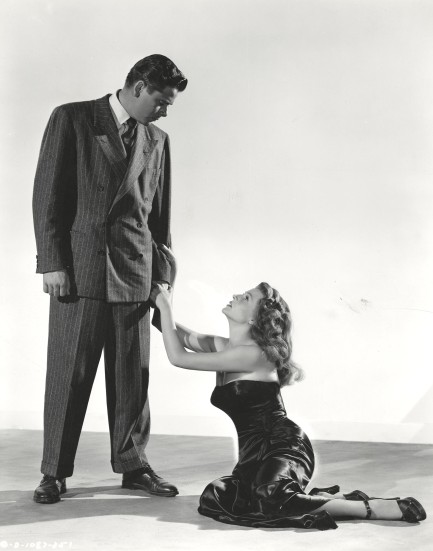 Glenn Ford is at it again, this time looming over Rita Hayworth for the 1946 classic Gilda. Glenn Ford is at it again, this time looming over Rita Hayworth for the 1946 classic Gilda. 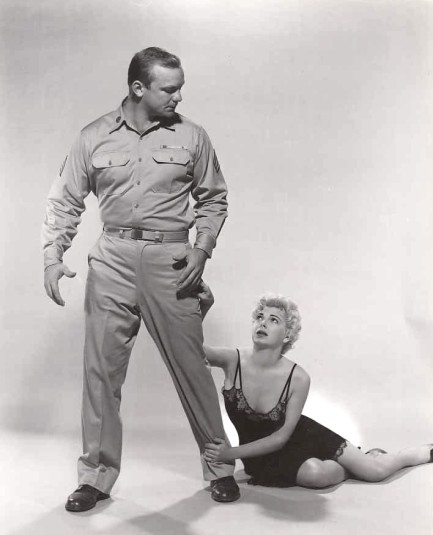 Aldo Ray and Barbara Nichols for 1958's The Naked and the Dead. Aldo Ray and Barbara Nichols for 1958's The Naked and the Dead.
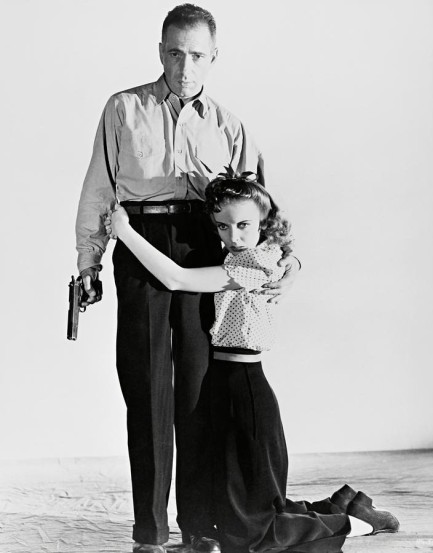 This one shows less domination and more protectiveness, as Humphrey Bogart prepares to defend Ida Lupino for High Sierra, 1941. This one shows less domination and more protectiveness, as Humphrey Bogart prepares to defend Ida Lupino for High Sierra, 1941.
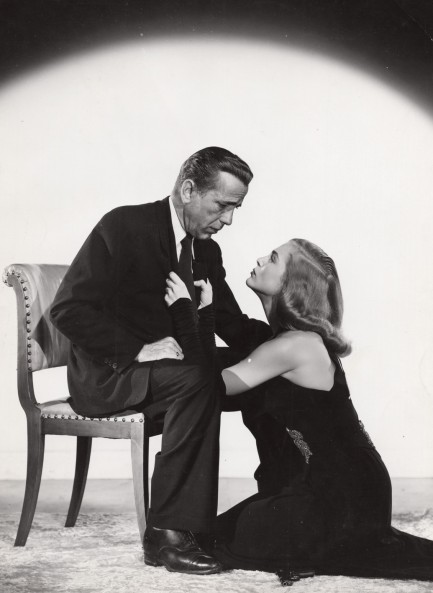 Humphrey once more. Here he's with Lizabeth Scott for Dead Reckoning, 1947. Humphrey once more. Here he's with Lizabeth Scott for Dead Reckoning, 1947.
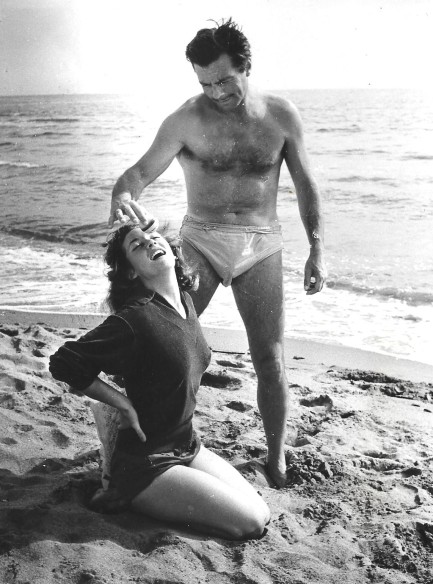 This shot shows Brazilian actress Fiorella Mari with an actor we can't identify in a movie we also can't identify. This shot shows Brazilian actress Fiorella Mari with an actor we can't identify in a movie we also can't identify.
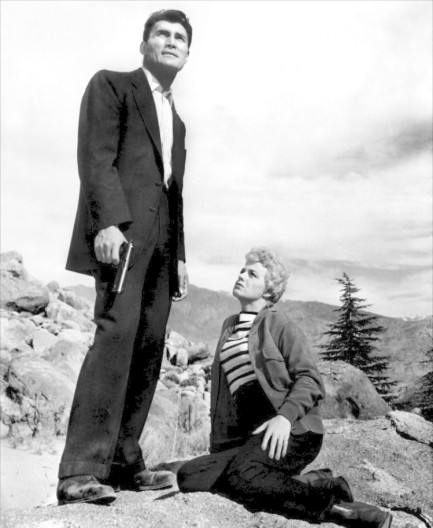 Shelly Winters and Jack Palance climb the highest mountain together for I Died a Thousand Times, 1955. Shelly Winters and Jack Palance climb the highest mountain together for I Died a Thousand Times, 1955.
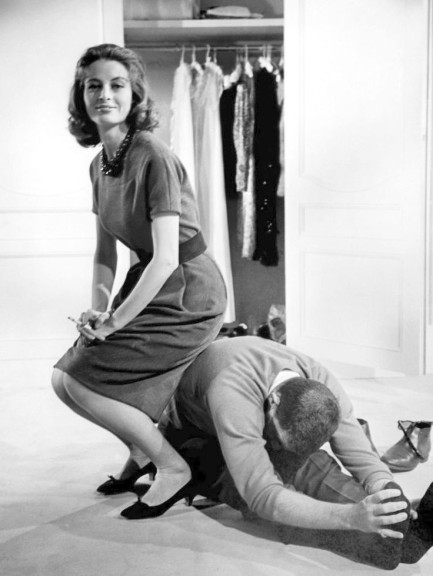 As we said, we didn't find as many examples of kneeling men, but we found this gem—Cappucine makes a seat of director Blake Edwards on the set of The Pink Panther in 1963. Does this count, though? While Edwards is subordinate, he isn't kneeling and it really isn’t a legit promo. As we said, we didn't find as many examples of kneeling men, but we found this gem—Cappucine makes a seat of director Blake Edwards on the set of The Pink Panther in 1963. Does this count, though? While Edwards is subordinate, he isn't kneeling and it really isn’t a legit promo.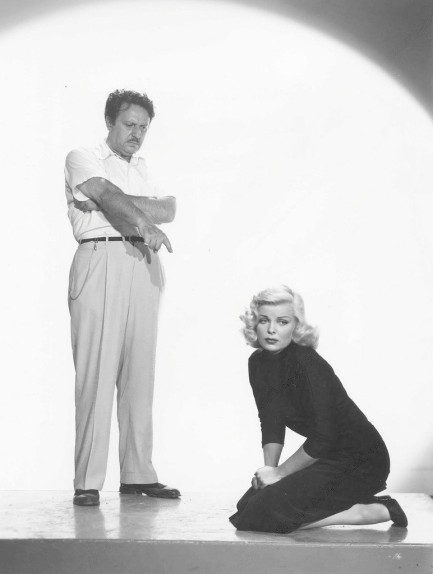 And lastly, in a curious example, Hugo Haas seems to tell Cleo Moore to stay in a shot made for 1953's One Girl's Confession. And lastly, in a curious example, Hugo Haas seems to tell Cleo Moore to stay in a shot made for 1953's One Girl's Confession.
 Bright, crisp, light bodied, aged twenty-seven years. 
This shot of French actress Lyne Chardonnet comes from the cover of an August 1970 issue of the Belgian magazine Ciné-Revue, a publication that's a gold mine for vintage celebrity imagery. We still have a few issues we picked up in Paris, and hopefully we'll scan those at some point. Chardonnet appeared in more than forty films during a fifteen year career, including Le tatoué and Dracula père et fils, aka Dracula and Son. She's another unfortunate actress that died early, but not by misadventure—liver cancer got her when she was only thirty-seven.
 The artist is almost as mysterious as his posters. 
You can see immediately that this Universal Pictures teaser poster for 1933's The Invisible Man is special. You'll find out how special in a minute. It was painted by Hungarian born artist Karoly Grosz, whose work is highly sought after. With this dark portrait he captured the essence of the film's insane central character Dr. Jack Griffin, who accidentally discovers invisibility and decides, what the hell, he'll use it to take over the world. An original of this poster went up for auction a few years back and pulled in $275,000. That's about as special as vintage art gets.
Halloween is today, so we thought we'd share more horror posters. Since Grosz specialized in that genre, we were able to focus solely on him and his work for Universal. Though he's a collectible legend, his bio is a bit sketchy. He immigrated to the U.S. in 1901 as a child, was naturalized as a citizen, and grew up to live and work in New York City. His output came mainly between 1920 and 1938, and he died young sometime after that (nobody is sure when, but most sources say he was in his early forties). At least he left behind these beautiful gifts to cinematic art. You can see another piece from him in this post from a while back, the one with the green-eyed cat.
 I vant to suck your jelly donut! The raspberry filling is irresistible! 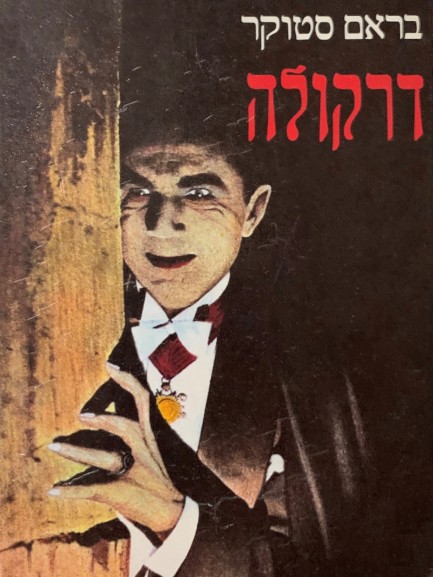
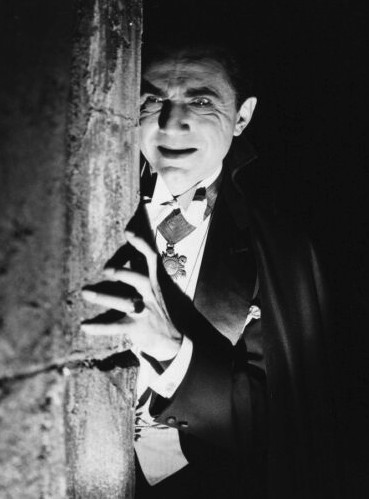 This cool cover fronts the original Hebrew translation of Bram Stoker's Dracula. It looks vintage but it's actually from 1984. It was made from a promo image, as you see, with Bela Lugosi wearing a very hungry expression. Vampires crave blood, but this look must be for something even better, like one of those Israeli jelly donuts—sufganiyot they're called. They'd make anyone modify their diet. Luckily, Dracula wears a cape, which means he won't need a napkin to wipe the powdered sugar off his mouth. Pulp style art from Israel is hard to find, as you can probably imagine. Is this pulp style? We think so, kind of. Anyway, we've located a few things—for example, this cover for Psycho. We'll keep looking and share anything we find. This cool cover fronts the original Hebrew translation of Bram Stoker's Dracula. It looks vintage but it's actually from 1984. It was made from a promo image, as you see, with Bela Lugosi wearing a very hungry expression. Vampires crave blood, but this look must be for something even better, like one of those Israeli jelly donuts—sufganiyot they're called. They'd make anyone modify their diet. Luckily, Dracula wears a cape, which means he won't need a napkin to wipe the powdered sugar off his mouth. Pulp style art from Israel is hard to find, as you can probably imagine. Is this pulp style? We think so, kind of. Anyway, we've located a few things—for example, this cover for Psycho. We'll keep looking and share anything we find.
 These are the warmest, slimiest raindrops I've ever felt. 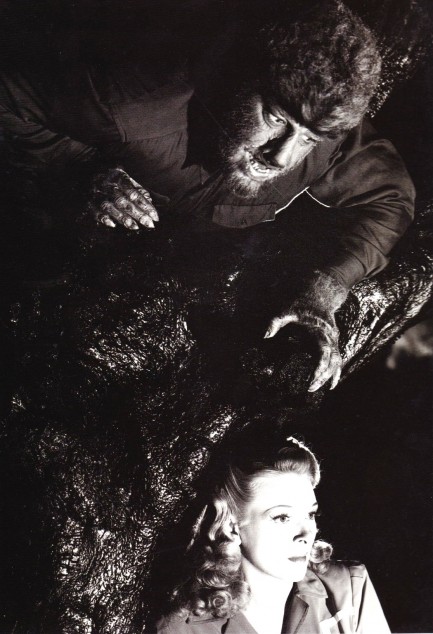
Since we were on the subject of werewolves a couple of days ago, here's a fun promo shot of Claude Rains about to precipitate doggie drool onto Evelyn Ankers in their 1941 horror flick The Wolf Man. Ankers had trouble with other weird creatures too, including ghosts in Hold That Ghost, a vampire in Son of Dracula, an unseen troublemaker in The Invisible Man's Revenge, and a reanimated monster in The Ghost of Frankenstein. All that experience and she never learned to look up. Well, in her defense Rains is unusually sneaky, plus canines don't usually climb trees.
 The mile high club and beyond.   
Stefani Casini has appeared in dozens of films, playing notable roles in Suspiria, Blood of Dracula, and Andy Warhol's Bad. None of those parts are as notable, in our opinion, as these photos of her playing around on an old Itavia Aerolinee DC-9. Itavia went out of business in the early 1980s, but Casini kept right on going and she's still acting today, with a headlining role in the well reviewed 2019 drama Dafne. We couldn't locate an actual date on these pix, but they're probably from around 1978.
 You know what vampires really like? Making more vampires. 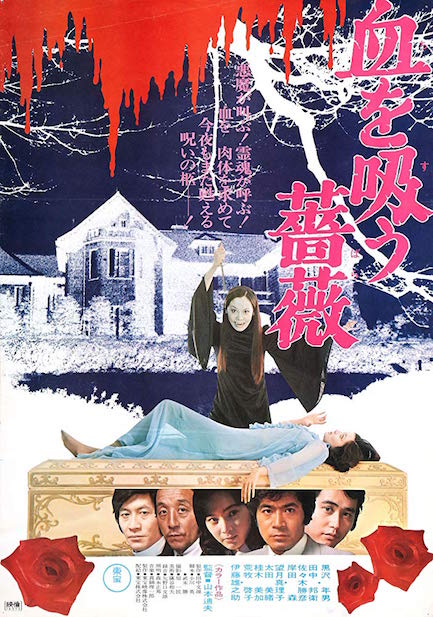
When it comes to Japanese film, we tend to stick to crime and pinku productions, but a change of pace is often nice. Chi o suu bara, which is known in English as Evil of Dracula, or sometimes Bloodsucking Rose, is straight horror about a teacher who takes a job at a women's school which he soon comes to suspect is plagued by a vampire. For those who like turn-of-the-millennium horror movies such as 2002's Ju-on or 1998's Ringu, this will seem like a precursor in terms of how the monster effects are achieved by using makeup and lighting. The movie is a bit funny at times, too, because these makeup effects are perfectly obvious to the viewer, but for the most part nobody within the film notices:
“Teacher, I would like to talk to you more seriously, but not in here. Please, will you follow me (into the creepy-ass woods that surround the school)?
“Sure (because I don't notice your ghastly blue face or the way you keep staring at my neck).”
But the movie is pretty good. Its weird, cyanotic vampires are menacing enough to put the mood across, and Shin Kishida as the main bloodsucker projects a physical power and savage hunger we totally bought. At one point the hero Toshio Kurosawa is asked, “Are you seriously expecting that people will believe such a lurid tale?” Well, vampire movies are all about building a framework of believability despite the subject matter's innate impossibility. Chi o suu bara might make you believe vampires can really fry. It premiered in Japan today in 1974.
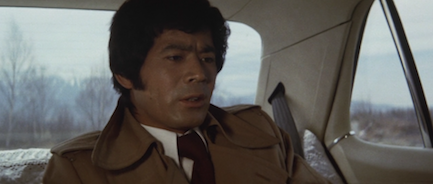 Shit. I think I left my lesson plan at home. Oh well. Guess I'll just wing it. Shit. I think I left my lesson plan at home. Oh well. Guess I'll just wing it.
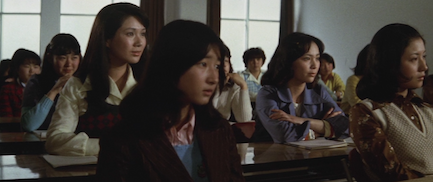 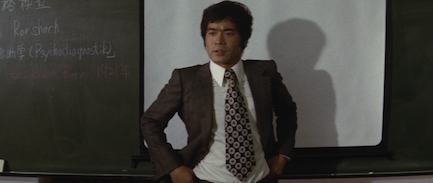 Thanks to my rigorous teacher training I desire none of you nubile young women sexually. Thanks to my rigorous teacher training I desire none of you nubile young women sexually.
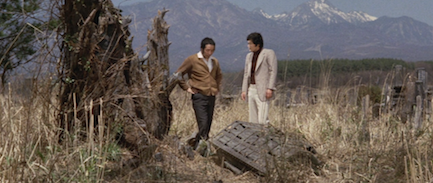 This old thing? It's been out here for as long as I can remember. I've never once been curious what's in it. This old thing? It's been out here for as long as I can remember. I've never once been curious what's in it.
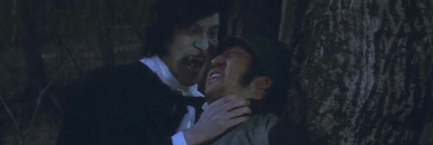 Centuries of *grunt* consuming blood have done nothing *gurgle* good for your breath! Centuries of *grunt* consuming blood have done nothing *gurgle* good for your breath!
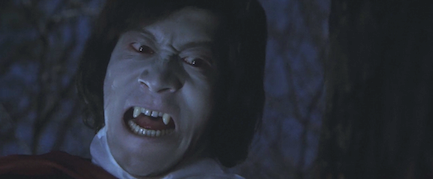 That's so rude! Just for that comment I'm gonna suck you extra slow! That's so rude! Just for that comment I'm gonna suck you extra slow!
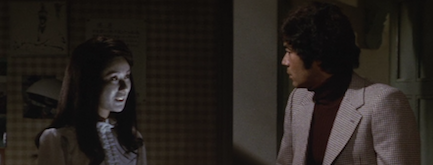 Teacher, can I talk to you about my mid-term? You gave me an a-minus and I think I deserve an a-positive—er, I mean an a-plus. Teacher, can I talk to you about my mid-term? You gave me an a-minus and I think I deserve an a-positive—er, I mean an a-plus.
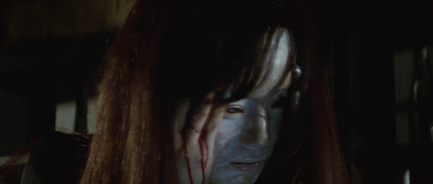 Master, check out this mask I got. This Halloween I'm going out dressed as a vampire. Totally meta, right? Master, check out this mask I got. This Halloween I'm going out dressed as a vampire. Totally meta, right?
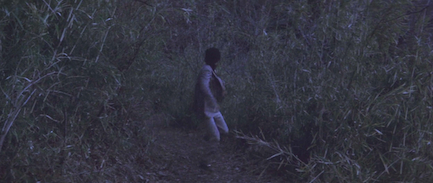 I think I lost him. That soulless demon. That total asshole. I think I lost him. That soulless demon. That total asshole.
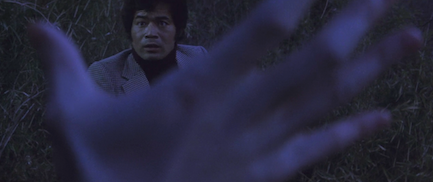 Oh shit! Oh shit!
 Every time I turn my back you suck another little hussy from the village 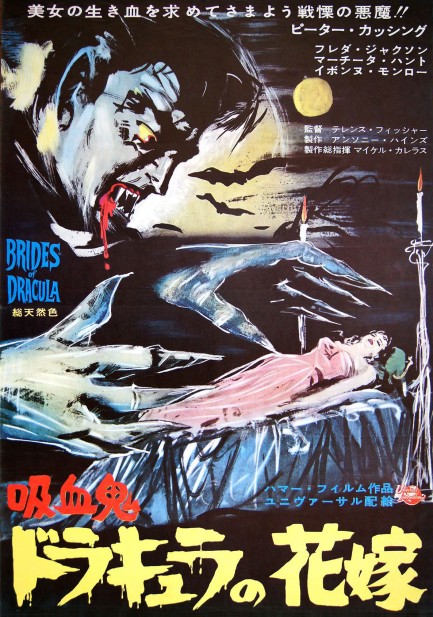
This unusual Japanese poster was made to promote the horror flick The Brides of Dracula, which premiered in the U.K. today in 1960. We don't have a Japanese premiere date, but we're guessing it was several years later. In the film, a French schoolteacher is hired to staff a position in Transylvania and, having lodging difficulties upon arrival, ends up accepting an offer by Baroness Meinster to spend the night in her creepy old castle. The teacher discovers the Baroness's son chained up in one of the rooms. She helps the seemingly beleaguered wretch escape, not realizing she's just released a vampire. She still doesn't realize it when she later agrees to marry him, but that's about when Dr. Abraham Van Helsing shows up with plans to ram a sharp piece of wood through his heart. Will it happen in time to save the teacher from a really bad marriage to a vampire who has neglected to mention not only that he's undead, but that he already has several undead wives? You'll have to watch to find that out. If you like dungeon horror, it's worth the effort, as this is from Hammer Studios, and is probably one of the best efforts from one of the most storied horror production companies. 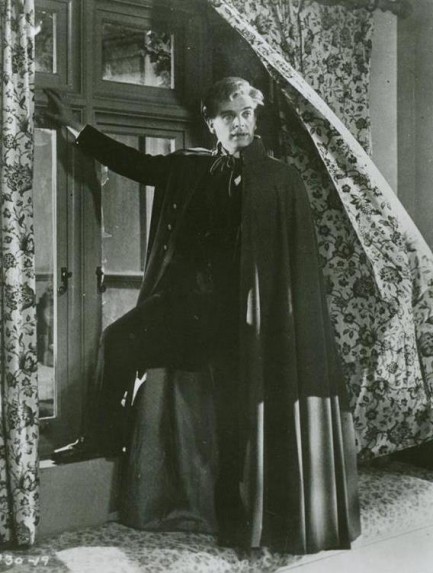 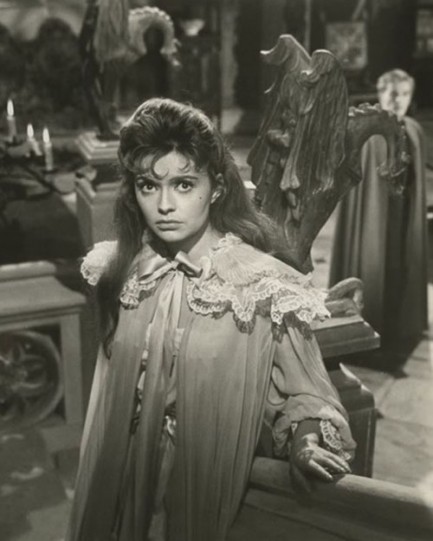 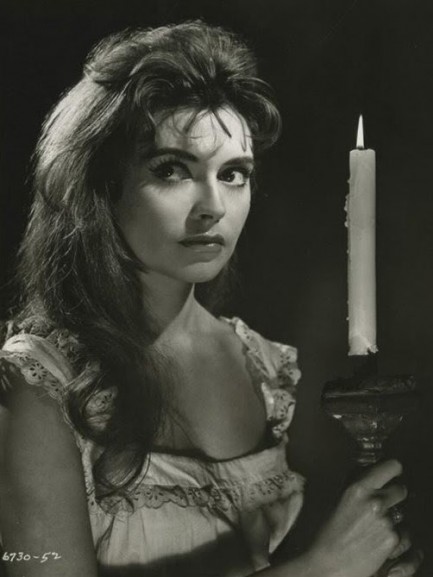
 Satan claws is coming to town. 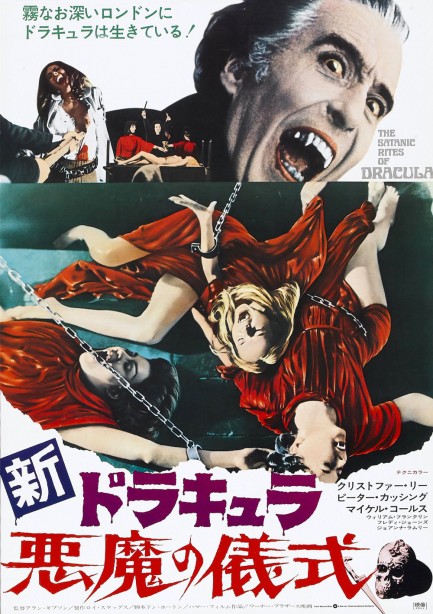
Nothing says Christmas like a cheesy horror movie, and they don’t get much cheesier than Hammer Film Productions’ b-flick Satanic Rites of Dracula. This was the seventh and last movie to feature Christopher Lee playing Dracula, a role he inhabited with great gusto, and the third with Peter Cushing as Van Helsing. In other words, Hammer really knew how to beat a dead horse. Plenty of summaries of this online, so we won’t bother. We just wanted to show you the nice art. Satanic Rites of Dracula first played in Japan today in 1974.

|
 |

The headlines that mattered yesteryear.
1933—The Gestapo Is Formed
The Geheime Staatspolizei, aka Gestapo, the official secret police force of Nazi Germany, is established. It begins under the administration of SS leader Heinrich Himmler in his position as Chief of German Police, but by 1939 is administered by the Reichssicherheitshauptamt, or Reich Main Security Office, and is a feared entity in every corner of Germany and beyond. 1937—Guernica Is Bombed
In Spain during the Spanish Civil War, the Basque town of Guernica is bombed by the German Luftwaffe, resulting in widespread destruction and casualties. The Basque government reports 1,654 people killed, while later research suggests far fewer deaths, but regardless, Guernica is viewed as an example of terror bombing and other countries learn that Nazi Germany is committed to that tactic. The bombing also becomes inspiration for Pablo Picasso, resulting in a protest painting that is not only his most famous work, but one the most important pieces of art ever produced. 1939—Batman Debuts
In Detective Comics #27, DC Comics publishes its second major superhero, Batman, who becomes one of the most popular comic book characters of all time, and then a popular camp television series starring Adam West, and lastly a multi-million dollar movie franchise starring Michael Keaton, then George Clooney, and finally Christian Bale. 1953—Crick and Watson Publish DNA Results
British scientists James D Watson and Francis Crick publish an article detailing their discovery of the existence and structure of deoxyribonucleic acid, or DNA, in Nature magazine. Their findings answer one of the oldest and most fundamental questions of biology, that of how living things reproduce themselves. 1967—First Space Program Casualty Occurs
Soviet cosmonaut Vladimir Komarov dies in Soyuz 1 when, during re-entry into Earth's atmosphere after more than ten successful orbits, the capsule's main parachute fails to deploy properly, and the backup chute becomes entangled in the first. The capsule's descent is slowed, but it still hits the ground at about 90 mph, at which point it bursts into flames. Komarov is the first human to die during a space mission.
|

|
|

It's easy. We have an uploader that makes it a snap. Use it to submit your art, text, header, and subhead. Your post can be funny, serious, or anything in between, as long as it's vintage pulp. You'll get a byline and experience the fleeting pride of free authorship. We'll edit your post for typos, but the rest is up to you. Click here to give us your best shot.

|
|




 Rod Taylor and Luciana Pauluzzi swap subordinate positions for 1967's Chuka.
Rod Taylor and Luciana Pauluzzi swap subordinate positions for 1967's Chuka. Edmund O'Brien goes for the time honored hair grab on Marla English for 1954's Shield for Murder.
Edmund O'Brien goes for the time honored hair grab on Marla English for 1954's Shield for Murder.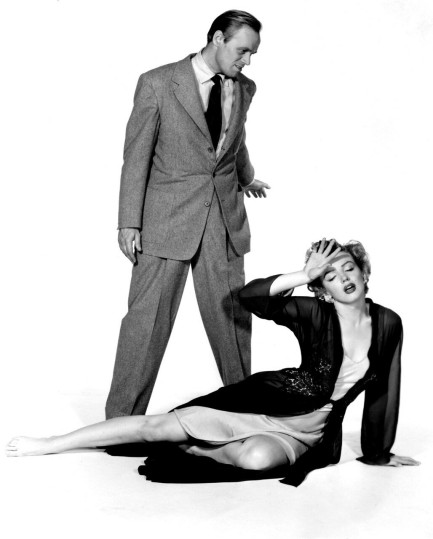 Marilyn Monroe swoons as Richard Widmark snarls for Don't Bother To Knock, 1952.
Marilyn Monroe swoons as Richard Widmark snarls for Don't Bother To Knock, 1952. Inger Stevens and Terry Ann Ross for Cry Terror, an adaptation of a novel we talked about a few years ago.
Inger Stevens and Terry Ann Ross for Cry Terror, an adaptation of a novel we talked about a few years ago. Kim Hunter soothes an overheated Marlon Brando in a promo for 1951's A Streetcar Named Desire.
Kim Hunter soothes an overheated Marlon Brando in a promo for 1951's A Streetcar Named Desire. George Raft menaces Marlene Dietrich in the 1941 comedy Manpower.
George Raft menaces Marlene Dietrich in the 1941 comedy Manpower.
 As promos go, these actually make sense. They show three unidentified models mesmerized by vampire Christopher Lee for 1970's Taste the Blood of Dracula.
As promos go, these actually make sense. They show three unidentified models mesmerized by vampire Christopher Lee for 1970's Taste the Blood of Dracula. Glenn Ford is at it again, this time looming over Rita Hayworth for the 1946 classic Gilda.
Glenn Ford is at it again, this time looming over Rita Hayworth for the 1946 classic Gilda. Aldo Ray and Barbara Nichols for 1958's The Naked and the Dead.
Aldo Ray and Barbara Nichols for 1958's The Naked and the Dead. This one shows less domination and more protectiveness, as Humphrey Bogart prepares to defend Ida Lupino for High Sierra, 1941.
This one shows less domination and more protectiveness, as Humphrey Bogart prepares to defend Ida Lupino for High Sierra, 1941. Humphrey once more. Here he's with Lizabeth Scott for Dead Reckoning, 1947.
Humphrey once more. Here he's with Lizabeth Scott for Dead Reckoning, 1947. This shot shows Brazilian actress Fiorella Mari with an actor we can't identify in a movie we also can't identify.
This shot shows Brazilian actress Fiorella Mari with an actor we can't identify in a movie we also can't identify. Shelly Winters and Jack Palance climb the highest mountain together for I Died a Thousand Times, 1955.
Shelly Winters and Jack Palance climb the highest mountain together for I Died a Thousand Times, 1955. As we said, we didn't find as many examples of kneeling men, but we found this gem—Cappucine makes a seat of director Blake Edwards on the set of The Pink Panther in 1963. Does this count, though? While Edwards is subordinate, he isn't kneeling and it really isn’t a legit promo.
As we said, we didn't find as many examples of kneeling men, but we found this gem—Cappucine makes a seat of director Blake Edwards on the set of The Pink Panther in 1963. Does this count, though? While Edwards is subordinate, he isn't kneeling and it really isn’t a legit promo. And lastly, in a curious example, Hugo Haas seems to tell Cleo Moore to stay in a shot made for 1953's One Girl's Confession.
And lastly, in a curious example, Hugo Haas seems to tell Cleo Moore to stay in a shot made for 1953's One Girl's Confession. 



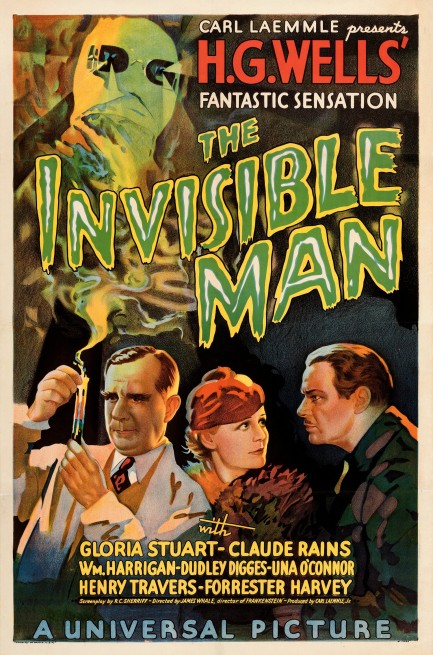
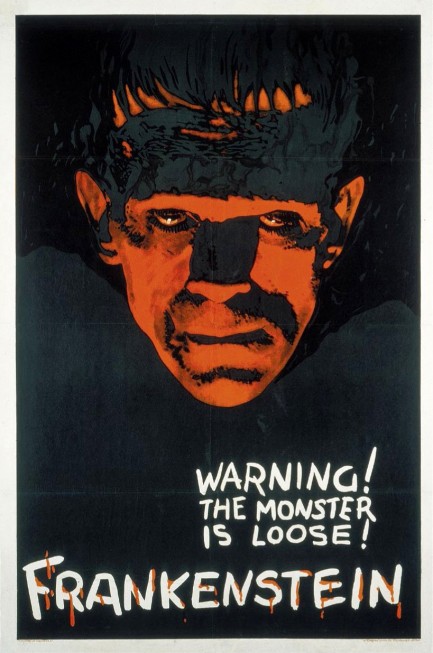
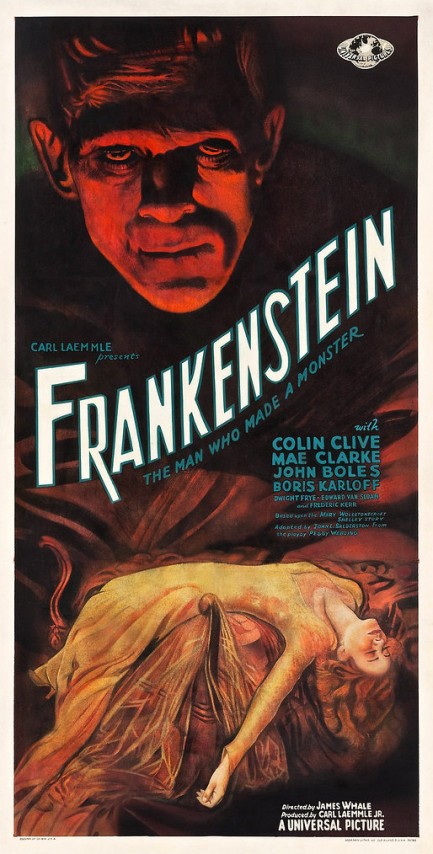
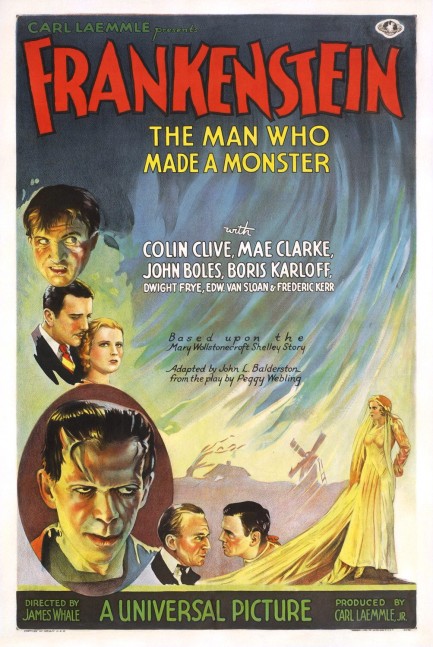
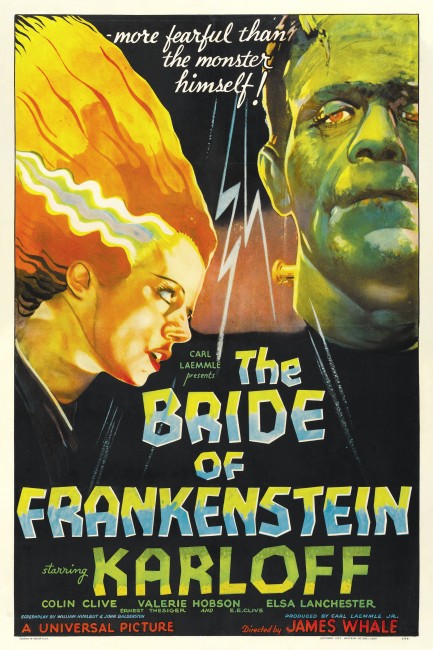
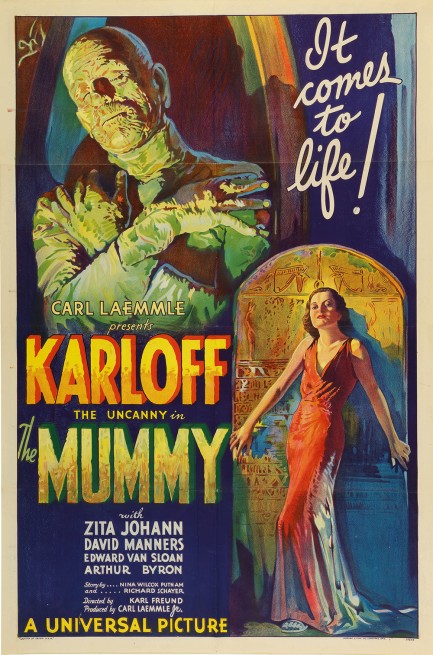
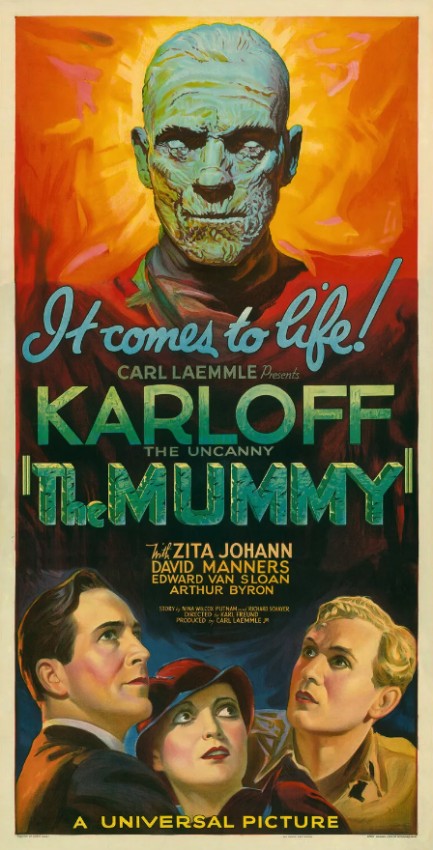
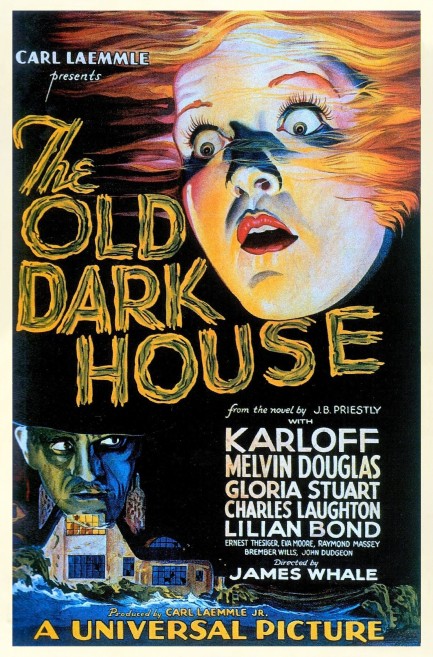
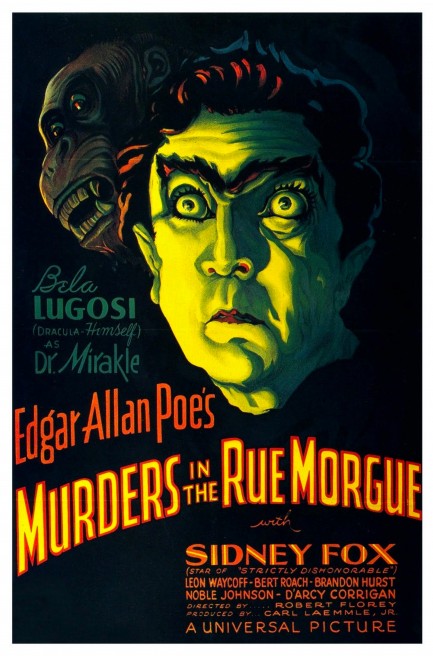
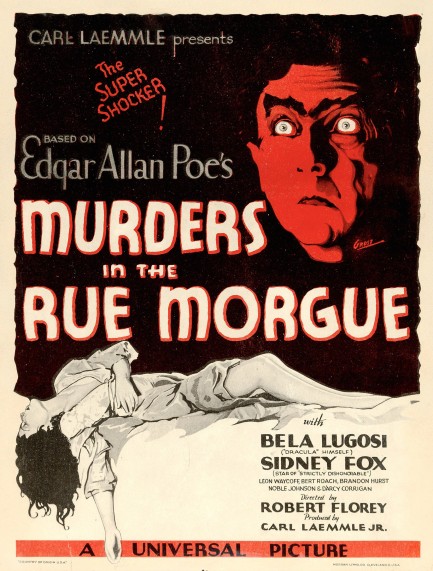
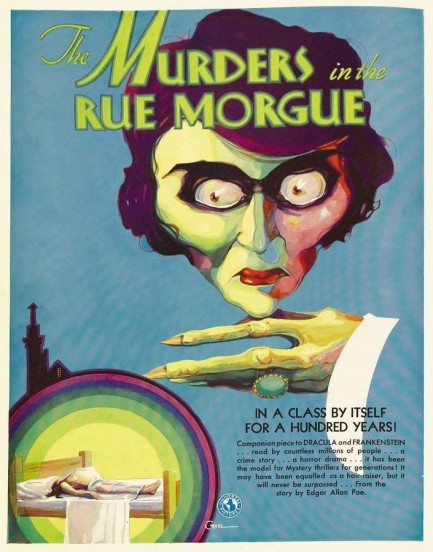
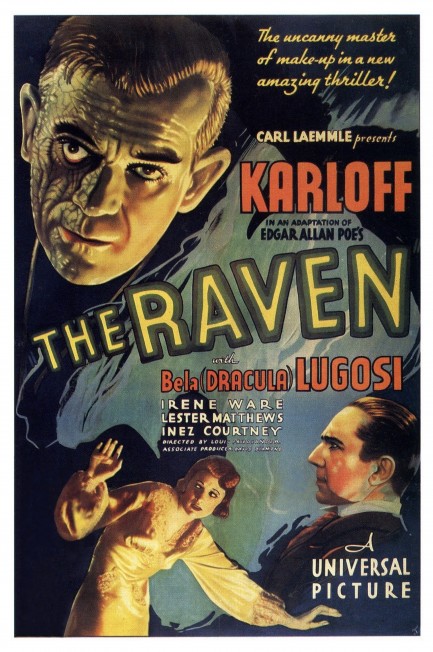
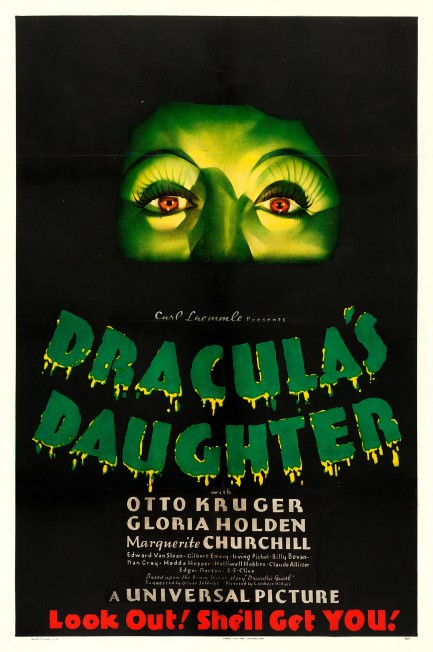


 This cool cover fronts the original Hebrew translation of Bram Stoker's Dracula. It looks vintage but it's actually from 1984. It was made from a promo image, as you see, with Bela Lugosi wearing a very hungry expression. Vampires crave blood, but this look must be for something even better, like one of those Israeli jelly donuts—sufganiyot they're called. They'd make anyone modify their diet. Luckily, Dracula wears a cape, which means he won't need a napkin to wipe the powdered sugar off his mouth. Pulp style art from Israel is hard to find, as you can probably imagine. Is this pulp style? We think so, kind of. Anyway, we've located a few things—for example, this cover for Psycho. We'll keep looking and share anything we find.
This cool cover fronts the original Hebrew translation of Bram Stoker's Dracula. It looks vintage but it's actually from 1984. It was made from a promo image, as you see, with Bela Lugosi wearing a very hungry expression. Vampires crave blood, but this look must be for something even better, like one of those Israeli jelly donuts—sufganiyot they're called. They'd make anyone modify their diet. Luckily, Dracula wears a cape, which means he won't need a napkin to wipe the powdered sugar off his mouth. Pulp style art from Israel is hard to find, as you can probably imagine. Is this pulp style? We think so, kind of. Anyway, we've located a few things—for example, this cover for Psycho. We'll keep looking and share anything we find.







 Shit. I think I left my lesson plan at home. Oh well. Guess I'll just wing it.
Shit. I think I left my lesson plan at home. Oh well. Guess I'll just wing it.
 Thanks to my rigorous teacher training I desire none of you nubile young women sexually.
Thanks to my rigorous teacher training I desire none of you nubile young women sexually. This old thing? It's been out here for as long as I can remember. I've never once been curious what's in it.
This old thing? It's been out here for as long as I can remember. I've never once been curious what's in it.  Centuries of *grunt* consuming blood have done nothing *gurgle* good for your breath!
Centuries of *grunt* consuming blood have done nothing *gurgle* good for your breath! That's so rude! Just for that comment I'm gonna suck you extra slow!
That's so rude! Just for that comment I'm gonna suck you extra slow! Teacher, can I talk to you about my mid-term? You gave me an a-minus and I think I deserve an a-positive—er, I mean an a-plus.
Teacher, can I talk to you about my mid-term? You gave me an a-minus and I think I deserve an a-positive—er, I mean an a-plus. Master, check out this mask I got. This Halloween I'm going out dressed as a vampire. Totally meta, right?
Master, check out this mask I got. This Halloween I'm going out dressed as a vampire. Totally meta, right? I think I lost him. That soulless demon. That total asshole.
I think I lost him. That soulless demon. That total asshole. Oh shit!
Oh shit!
